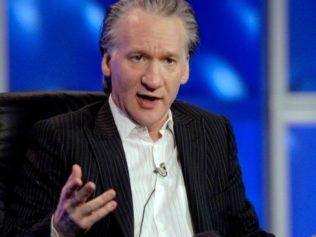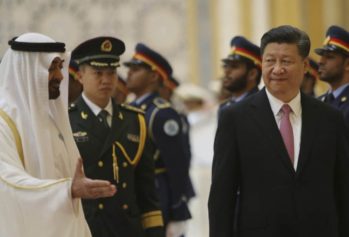
Despite the recent media attention paid to Russian meddling in the 2016 U.S. presidential election, the U.S. government has interfered in the internal affairs of other nations far more than Russia. (photo: Wikimedia Commons
With news of Russian meddling in the 2016 U.S. presidential election seizing the spotlight each day, America is now faced with the prospect of being victimized by the same practices it has promoted throughout the world. While Russia is receiving attention for its interference in the internal politics of the United States, Britain and other European nations, Uncle Sam has a long history of disrupting foreign governments, engaging in regime change, deposing elected leaders and even assassinating them.
Comparing the United States and Russia and their respective histories of overt and covert election influence in other countries, the former wins decisively. Carnegie Mellon University researcher Dov H. Levin has created a data set in which he found between 1946 and 2000, the U.S. interfered in foreign elections 81 times, while the Soviet Union and later Russia meddled on 36 occasions. “I’m not in any way justifying what the Russians did in 2016,” Levin told The New York Times. “It was completely wrong of Vladimir Putin to intervene in this way. That said, the methods they used in this election were the digital version of methods used both by the United States and Russia for decades: breaking into party headquarters, recruiting secretaries, placing informants in a party, giving information or disinformation to newspapers.”
Africa and the Caribbean provide ample evidence of a history of U.S. meddling in the elections of other nations. For example, Patrice Lumumba, the first democratically elected prime minister of the Democratic Republic of the Congo, was overthrown and assassinated in 1961 by the Belgians, who were reportedly aided and abetted by the CIA. The U.S. also had its own plan, which was not implemented, to assassinate Lumumba by lacing his toothpaste with poison, and otherwise remove him from power through other methods.
In 1966, the CIA was involved in the overthrow of Ghanaian President Kwame Nkrumah by way of a military coup. According to CIA intelligence officer John Stockwell in the book “In Search of Enemies,” the Accra office of the CIA had a “generous budget” and was encouraged by headquarters to maintain close contact with the coup plotters. According to a declassified U.S. government document, “The coup in Ghana is another example of a fortuitous windfall. Nkrumah was doing more to undermine our interests than any other black African. In reaction to his strongly pro-Communist leanings, the new military regime is almost pathetically pro-Western.” CIA participation in the coup was reportedly undertaken without approval from an interagency group that monitors clandestine CIA operations.
The U.S. Marines were on hand in 1912 to assist the Cuban government in destroying El Partido de Independiente de Color (PIC) or the Independent Party of Color, which was formed by descendants of slaves and became the first 20th century Black political party in the Western Hemisphere outside of Haiti. PIC — which believed in racial pride and equal rights for Black people — engaged in protest after the Cuban government banned the race-based party from participating in elections. In putting down the PIC, the United States invoked the Platt Amendment, which allowed American intervention in Cuban affairs. The military action from U.S. and Cuban forces resulted in the massacre of 6,000 Black people.
The U.S. occupied the Dominican Republic twice — from 1916 until 1924, controlling the government and who became president, and again in 1965, opposing elected president Juan Bosch, supporting a military coup and installing Joaquin Balaguer. President Reagan took advantage of the assassination of Prime Minister Maurice Bishop of Grenada and orchestrated its long planned invasion of the Caribbean nation, justifying the invasion on the grounds the regime was anti-American and supported by Cuba.
America is known for a high degree of intervention and coup sponsorship in Haiti, with military occupations and support for brutal dictators, and the ousting of President Jean-Bertrand Aristide under both Presidents George H.W. and George W. Bush. In 2009, during the Obama administration, Honduran President Manuel Zelaya was overthrown in a military coup and forced to fly to a U.S. military base at gunpoint and in his pajamas in an act of American-endorsed regime change. Although there was no evidence the Obama administration was involved in the coup, it did not stop it from taking place. The United States called for new elections rather than declaring a coup had taken place, and contributed to the subsequent deterioration and violence in Honduras. Elsewhere in Latin America, the U.S. was involved in the 1954 overthrow of Jacobo Arbenz Guzman, the democratically elected president of Guatemala, to protect the profits of the United Fruit Company.
In 1953, the CIA, with help from Great Britain, engineered a coup in Iran, overthrowing the democratically elected Prime Minister Mohammed Mossadegh and installing a puppet regime under the Shah. This, after Mossadegh nationalized the British Anglo-Iranian Oil Company, later known as BP. In 1965, the U.S. Embassy supported the rise to power of Indonesia’s brutal dictator General Suharto, and enabled his massacre of over half a million Indonesians.. Ten years later, the U.S. helped Suharto with political and military support in his invasion of East Timor, which had declared independence from Portugal. The Indonesian occupation killed more than 200,000 Timorese, one third of the population.
With the 2016 presidential election, America now has experienced having another country meddle in its internal affairs — something which the U.S. has perpetrated against other nations for more than a century.


